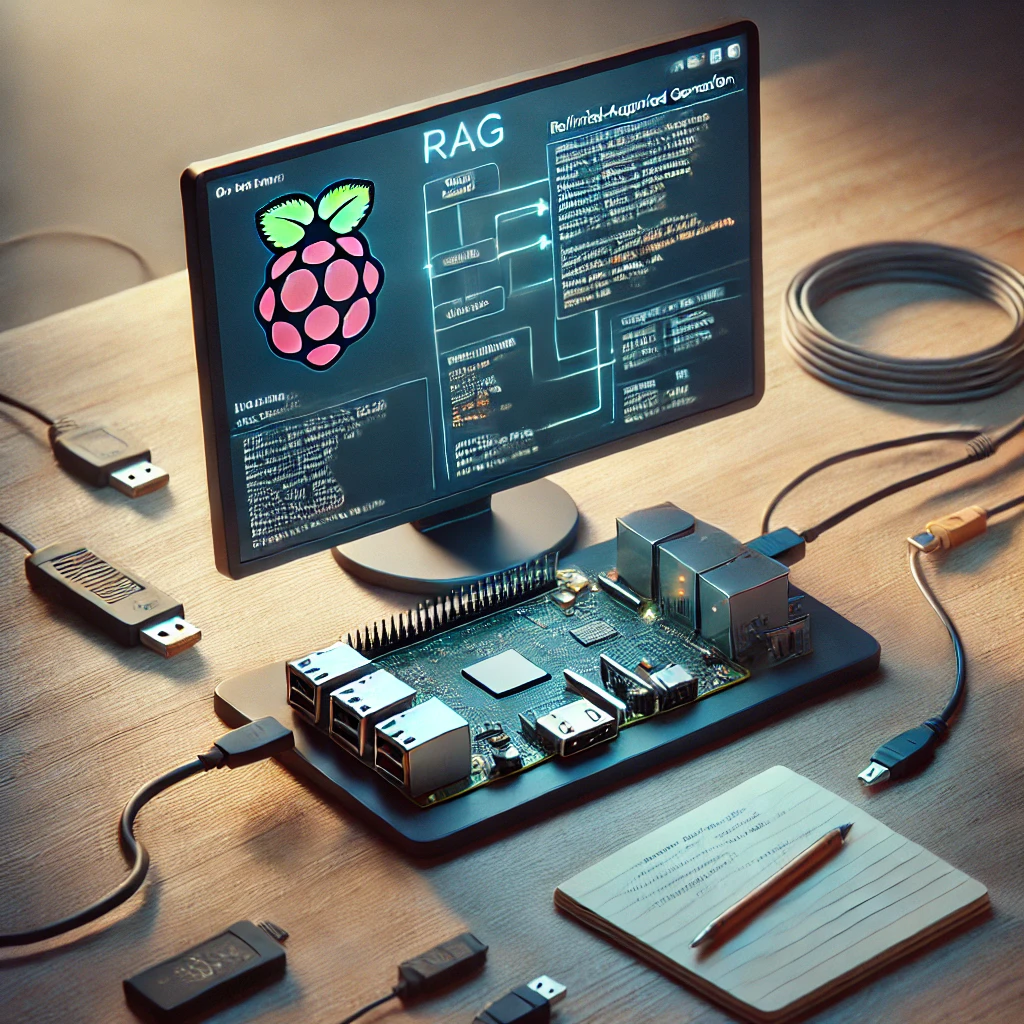Building a RAG-Enabled Chatbot on Raspberry Pi 5
Introduction
Retrieval Augmented Generation (RAG) is a compelling approach that combines the generative capabilities of Large Language Models (LLMs) with contextual data fetched from external sources. By retrieving relevant information from a knowledge base at runtime, RAG enhances the accuracy and relevance of chatbot responses.
In this project, I set out to build and deploy a RAG-enabled chatbot on a Raspberry Pi 5. Leveraging optimized open-source tools such as llama-cpp-python and FAISS, the chatbot delivers meaningful, context-aware responses using the Llama-3.1-8B model. The aim was to achieve high-performance inference on constrained hardware using efficient model quantization and Arm-specific optimizations.

Project Overview
The solution architecture involves embedding documents into vector representations and storing them in a Vector Database (VectorDB). Upon user query, the system retrieves relevant document embeddings to provide contextual grounding to the LLM, enabling more precise responses.
This walkthrough is tailored for Raspberry Pi 5 (8GB RAM, 32GB+ disk), using the following tools:
- llama-cpp-python for LLM inference
- FAISS for vector similarity search
- Llama-3.1-8B model (quantized for edge deployment)
Installation and Setup
System Requirements
Install system dependencies:
sudo apt update
sudo apt install python3-pip python3-venv cmake -y
Python Environment
Set up and activate a virtual environment:
python3 -m venv rag-env
source rag-env/bin/activate
pip install -r requirements.txt
llama-cpp-python
Install the version optimized for Arm CPUs:
pip install llama-cpp-python --extra-index-url https://abetlen.github.io/llama-cpp-python/whl/cpu
Model Deployment
Model Download
Create a models directory and download the quantized model:
mkdir models && cd models
wget https://huggingface.co/chatpdflocal/llama3.1-8b-gguf/resolve/main/ggml-model-Q4_K_M.gguf
Build and Quantize Llama.cpp
Clone and build the llama.cpp project:
git clone https://github.com/ggerganov/llama.cpp
cd llama.cpp && mkdir build && cd build
cmake .. -DCMAKE_CXX_FLAGS="-mcpu=native" -DCMAKE_C_FLAGS="-mcpu=native" -DLLAMA_CURL=OFF
cmake --build . -v --config Release -j $(nproc)
Quantize the model:
cd bin
./llama-quantize --allow-requantize ~/RAG_Raspberry_Pi5/models/ggml-model-Q4_K_M.gguf ~/RAG_Raspberry_Pi5/models/llama3.1-8b-instruct.Q4_0_arm.gguf Q4_0
Running the Chatbot
Basic Inference Test
Test LLM inference:
source rag-env/bin/activate
python llm.py
RAG Pipeline
Import Dataset: Ensure Kaggle API access is configured, then import data:
python import_data.pyVector Embedding: Embed documents for retrieval:
python vector_embedding.pyNote: This step can take several hours depending on dataset size and Pi performance.
Launch Chatbot:
python rag.py
Evaluation
We evaluated the chatbot using both standard and RAG-enabled modes. A clear improvement in contextual accuracy was observed when using RAG.
Example Query:
“How long was Lincoln’s formal education?”
Without RAG:


With RAG:



The RAG-enhanced chatbot retrieved historical data from the VectorDB and generated an accurate response, significantly outperforming the standalone LLM.
Reflections
Deploying a RAG-enabled chatbot on Raspberry Pi showcases the potential of edge AI solutions. Despite hardware limitations, model quantization and efficient libraries allowed for practical inference and contextual reasoning. Key takeaways include:
- Importance of hardware-aware optimization
- Trade-offs in embedding time vs. model performance
- Value of accurate, context-driven response generation
Conclusion
This project demonstrates that even resource-constrained devices like Raspberry Pi 5 can host sophisticated AI applications when paired with the right tools and techniques. Building a RAG-enabled chatbot not only enhanced my understanding of vector databases and LLMs but also highlighted the practical considerations for deploying AI on the edge.
You can find the source code and contribute on GitHub.
